REVAMP
MEDICAL APPAREL
“Reclaiming Dignity in Healthcare”
Redesign of Medical Apparel Where functionality Meets Modesty, Comfort, and Healing.”
Redesign of Medical Apparel Where functionality Meets Modesty, Comfort, and Healing.”

This work has been distilled from an intensive two-year body of work for ease of viewing and understanding.
Sponsor : All India Institute of Medical Sciences, Govt. of India.
2022-23
Brief
Medical apparel is one of the first point of contact with the medical facility. Despite the known impact of clothing on social identity, self-expression and belief system, the impact of hospital clothing on patient’s well being has been widely overlooked.
Passive acceptance of medical apparel can have a lasting impression on an individual’s mental health especially women patients. The importance of personalized and dignified care needs to be recognized by healthcare policies and practice. In this project the effects of patient apparel in the healthcare system is explored along with research on existing design interventions. It aims to design a set of functional medical apparel for varying departments that is both functional and comfortable for the wearer- pre, post and during procedures.

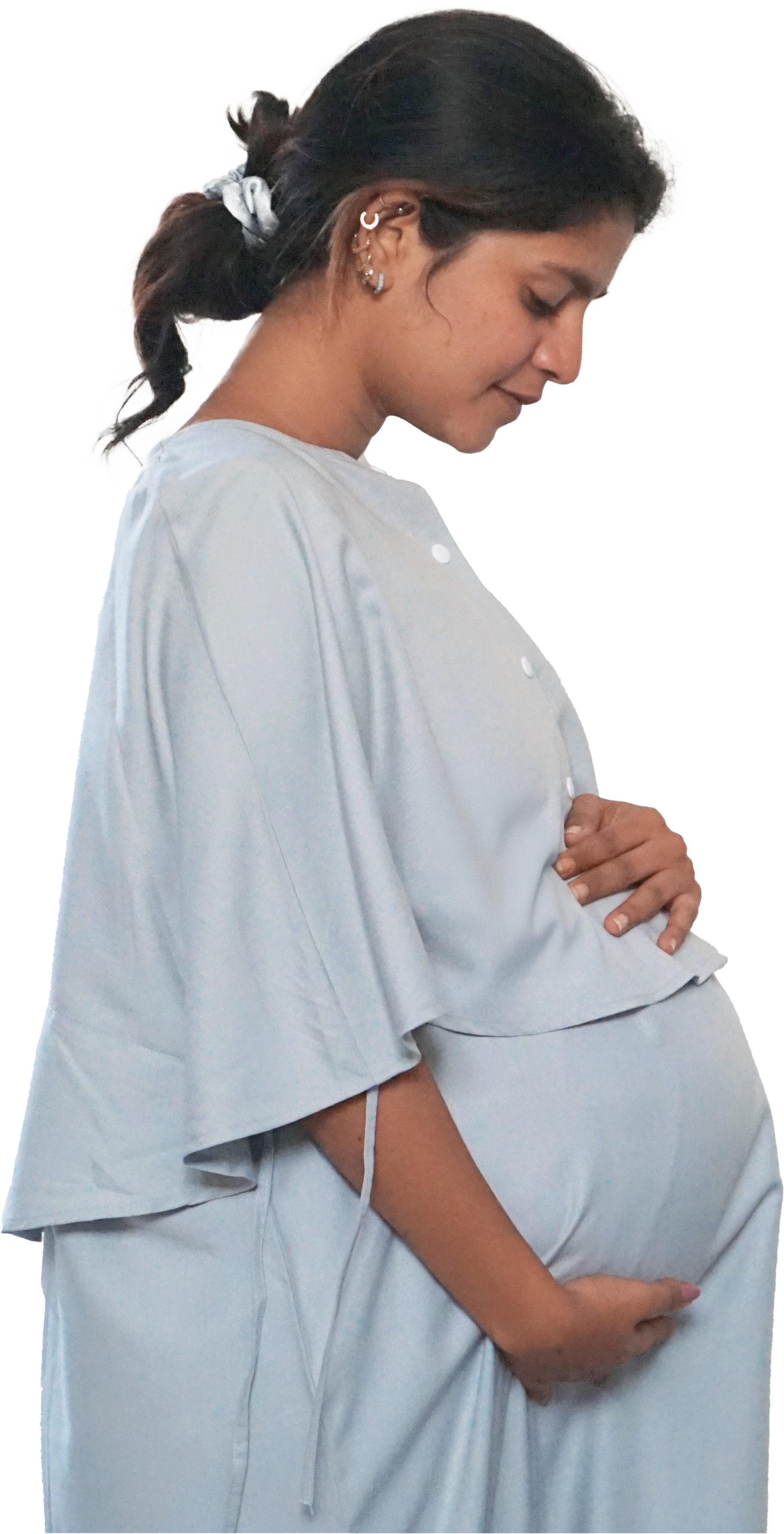

Location- All India Institute of Medical Sciences AIIMS, Bhubaneswar, India

Design Methodology
Designing a product within a larger system requires understanding all relevant and emerging factors, then narrowing in through a focused, empathetic lens. Desk research and secondary insights laid the groundwork for a deeper exploration into user needs. By engaging directly with extreme users, the methodology bridges broad context with intimate experience, ensuring each stage of design is rooted in real, critical moments of care.
Problem Identification
The Immodest Cost to usersThe impact of hospital clothing has got little attention even in contemporary times, despite the known impact of clothing in forming social identity.
AIIMS is a tertiary level, public hospiatal that treats over twelve thousand patients everyday over the country. In the hustle of treating patients on everyday basis, healthcare providers often oversight the significant impact of dignity in the healing process.
Hospitalization is not just a medical event—it often involves loss of- control, social support, and personal dignity. It can undermine well‑being, lead to feelings of vulnerability, and impede healthy coping mechanisms. Wearing the gown represents a shift in participants’ psychological state, a transition from a ‘healthy’ to ‘sick’ identity, which had implications on how participants felt within themselves.

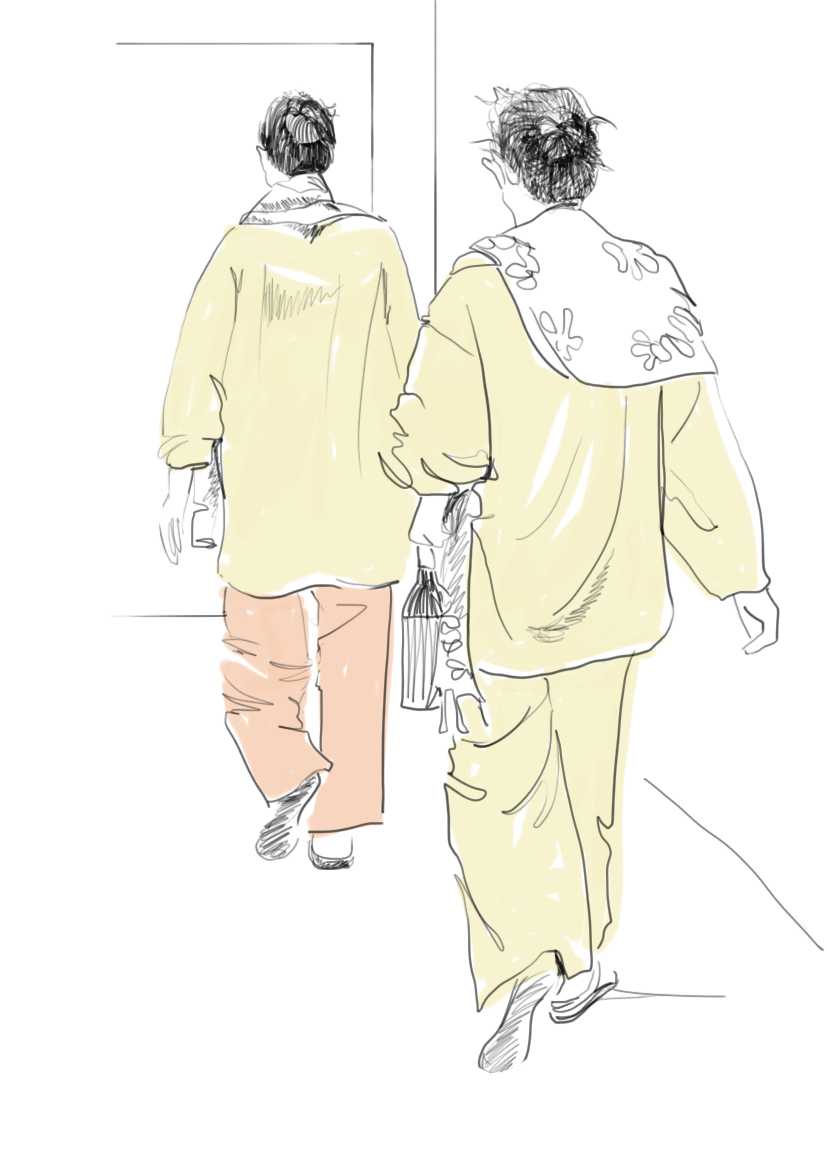
People with their personal items/sash for conceling themselves after been given the ward clothing.
This shows a level of discomfort with an added risk of infection.
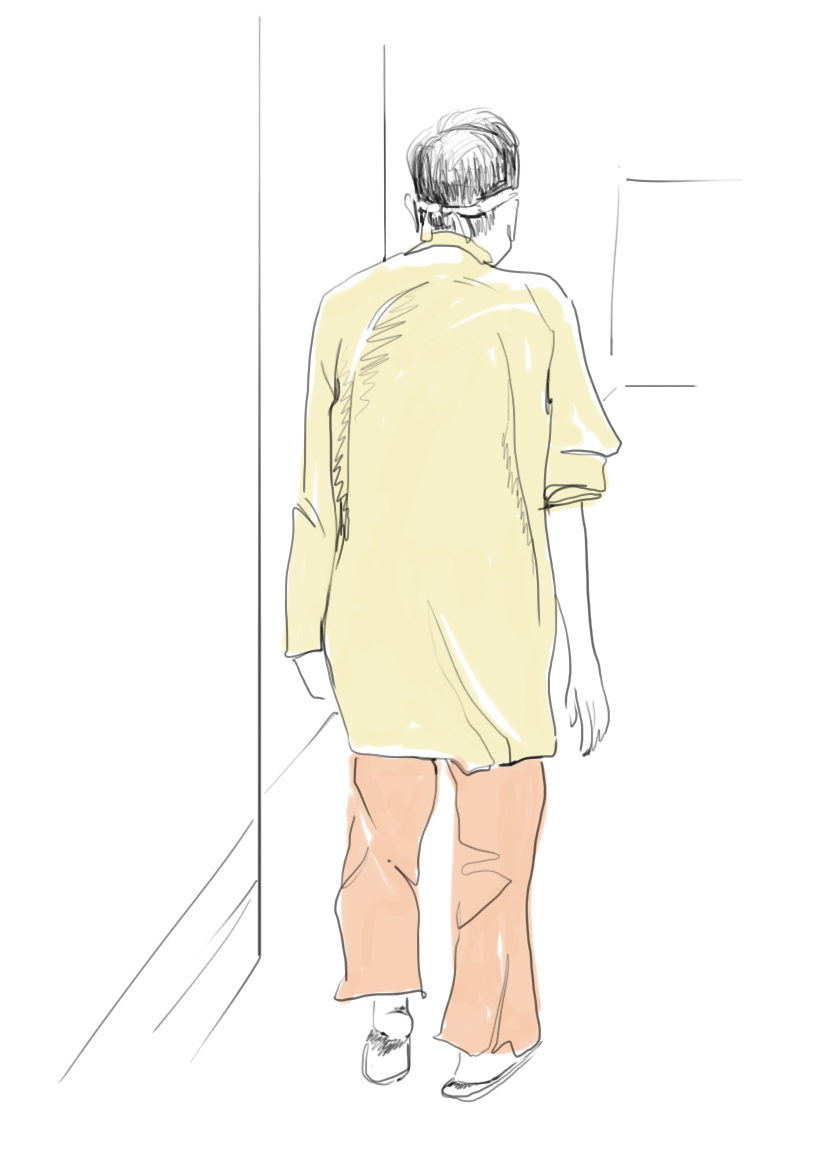 Old man wearing an ill-fitted set.
Old man wearing an ill-fitted set. Sleeve rolled up because of canola attachment.
 A man at the pre operative area (Urology) with OT gown
A man at the pre operative area (Urology) with OT gown carrying urinal catheter by lifting the gown up.
 Current maternity gown with accentuitated waistline that highlights the bust and the baby bump. She’s trying to conceal her top with a sash because of the same.
Current maternity gown with accentuitated waistline that highlights the bust and the baby bump. She’s trying to conceal her top with a sash because of the same.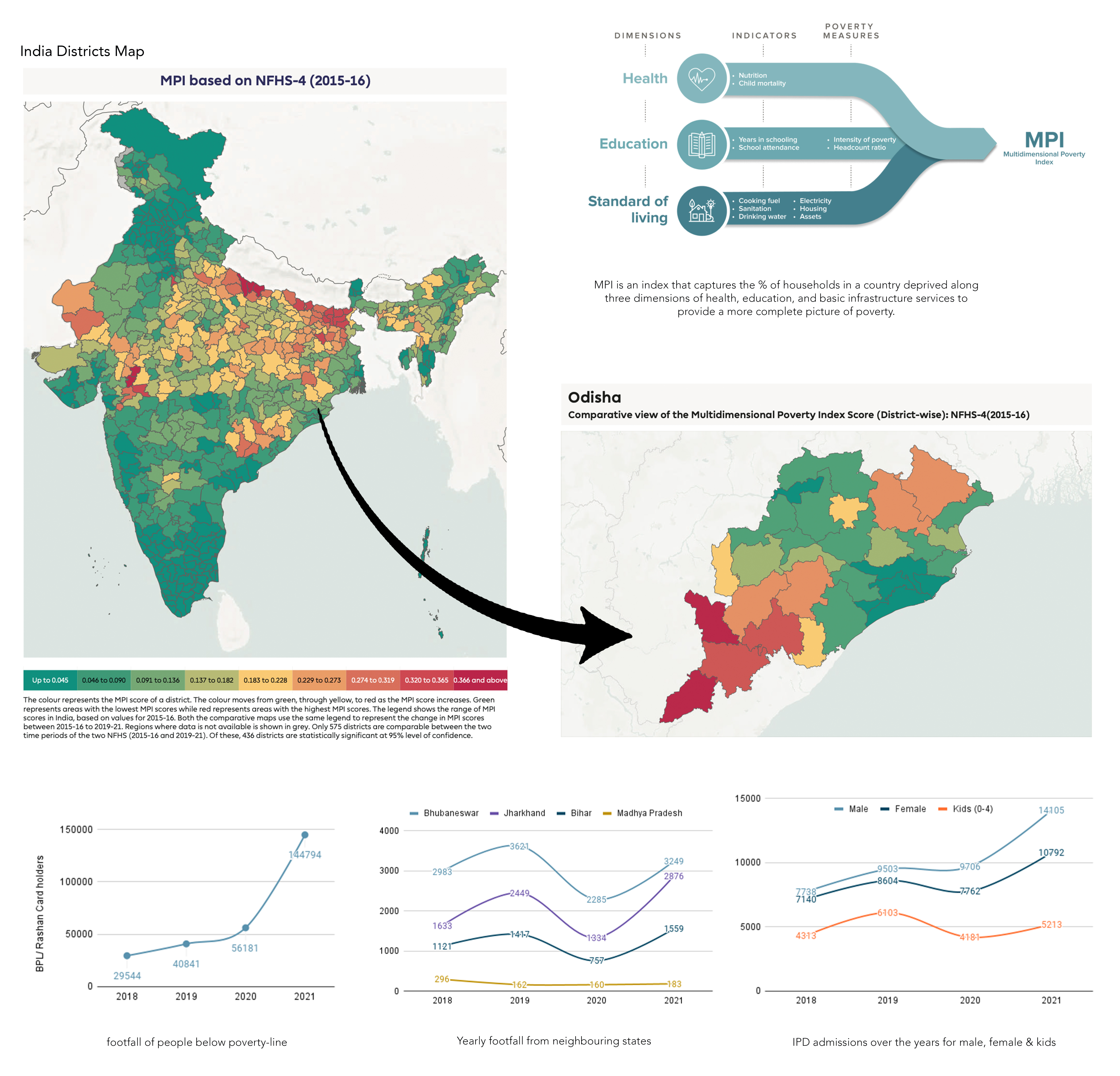
Primary Research
People & EconomyAIIMS Bhubaneswar is the only affordable and reliable tertiary level healthcare service around the region which makes it a major attraction for neighboring low MPI(Multidimensional Poverty Index) states too. Odisha is the eleventh most populous state in India and home to 42 million people. Poverty reduced sharply in the state after 2005, it is still very high. The state is home to 14 million poor.
A good proportion of patients from the neighboring states has shown a hike post-COVID. The general OPD and IPD admissions were relatively low during the pandemic but have drastically risen since, especially among women. In such overwhelming numbers, it’s clear that dignity has quietly taken a back seat.
Secondary Aspects
perceptible factors to considerCOLOR SCIENCE: A blood stain on white or any lighter color could create a blinding effect/ optical illusion for the operator. Therefore complimentary colors of similar tone (blue or green) is used to detect blood loss and avoid distraction at the same time.

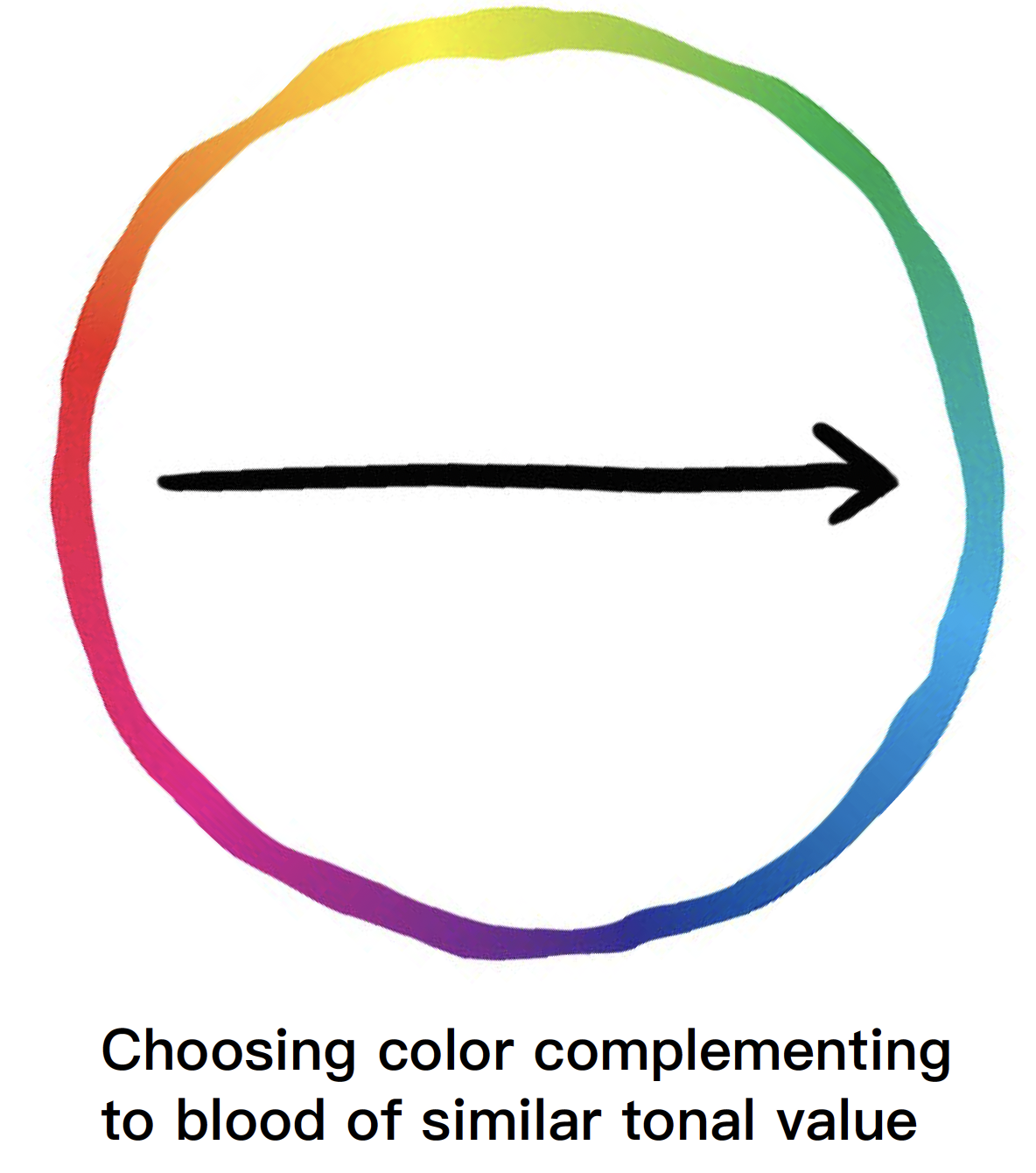


MATERIAL & SUSTAINABLITY: Hospitals generate large amounts of waste each year, with medical gowns being a major contributor. Entire gowns are often discarded for convenience, without separating components like fabric, buttons, or Velcro. This makes disposal time a key factor in material and joinery choices. Polyester-cotton blends are ideal for humid climates, offering a good balance of breathability, moisture-wicking, durability, and resistance to harsh washes.

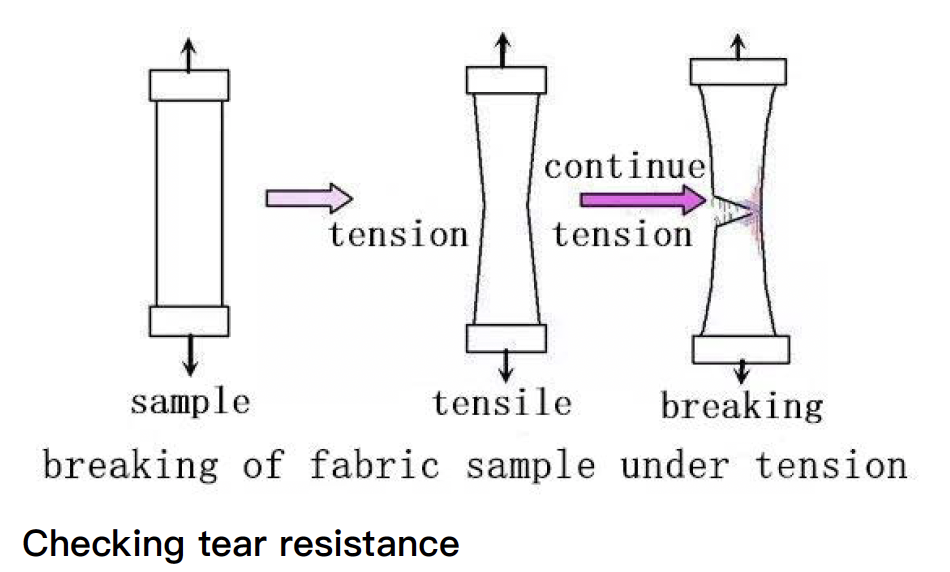
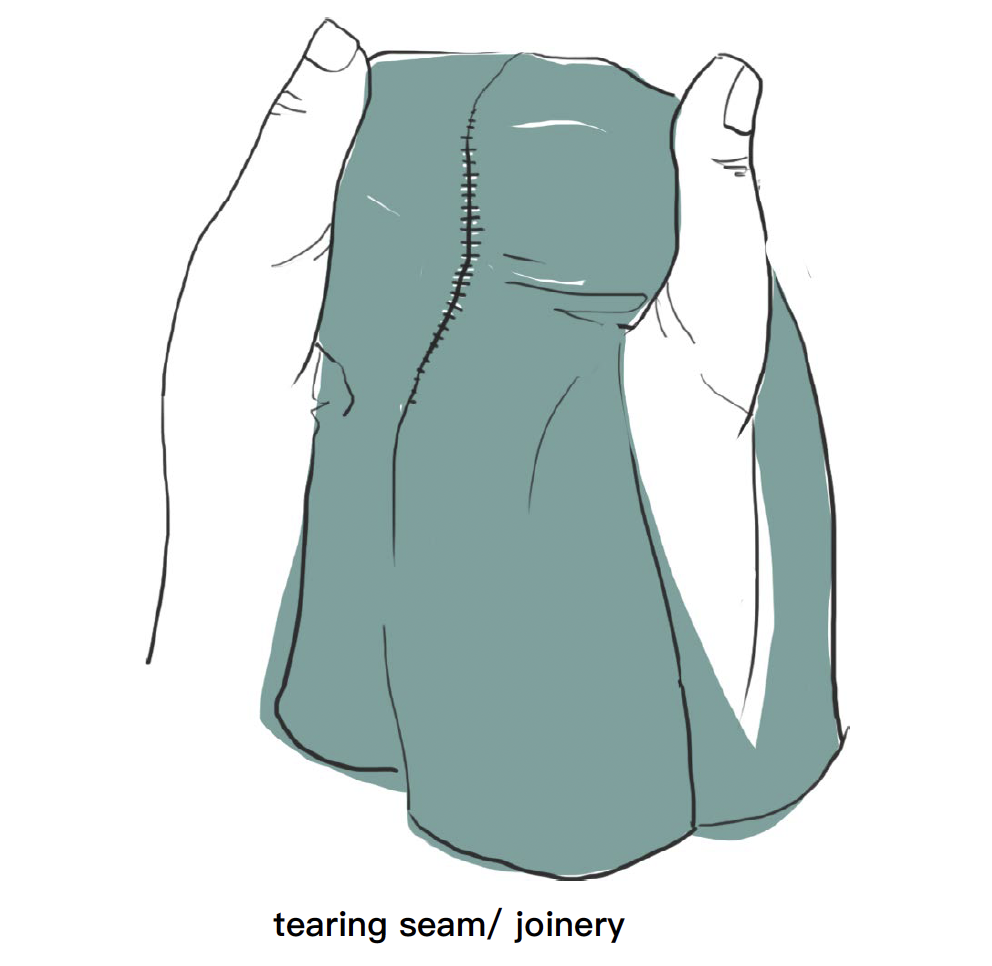

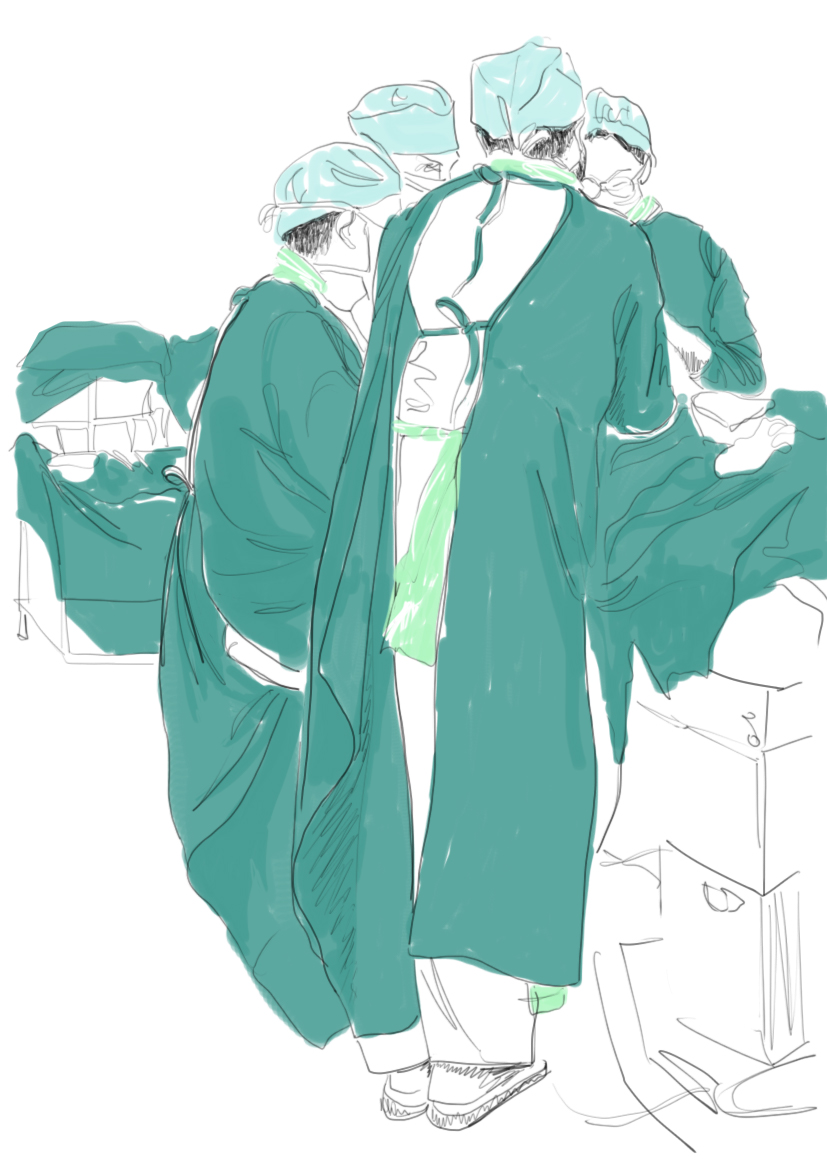
Intervention
Specific Insights & Pain Points- The hospital apparel can be broadly categorised into three categories- Operation theatres & ICUs, General wards and maternity wards.
- Need of design that is easier for people to put on by themselves, less revealing, more comfortable, better fit, warmer, and able to accommodate medical equipment.
- Functionality and comfort could go parallel. designed categories should facilitate device functioning (catheters, ECG, BP cups, epidural,etc) with minimal or no bodily exposure especially while the patient is conscious.
- The fit must be adjustable according to one’s body size and shape. Aim is to keep less overall sizes for the ease of circulation.
- The new designs should not just cater the patients but also the hospital system (i.e., low cost & maintenance, secure to use, and production friendly).
- Material is the key. It should maintain bodily and mental efficiency and a feeling of comfort in one’s culture & climatic condition.
Ideation & Prototyping
A thorough round of prototyping and testing on patients took place in live hospital environment before anything is finalised. A visit to laundry site was arranged too in order to understand the process, limitations, distribution and the intensity of the wash.
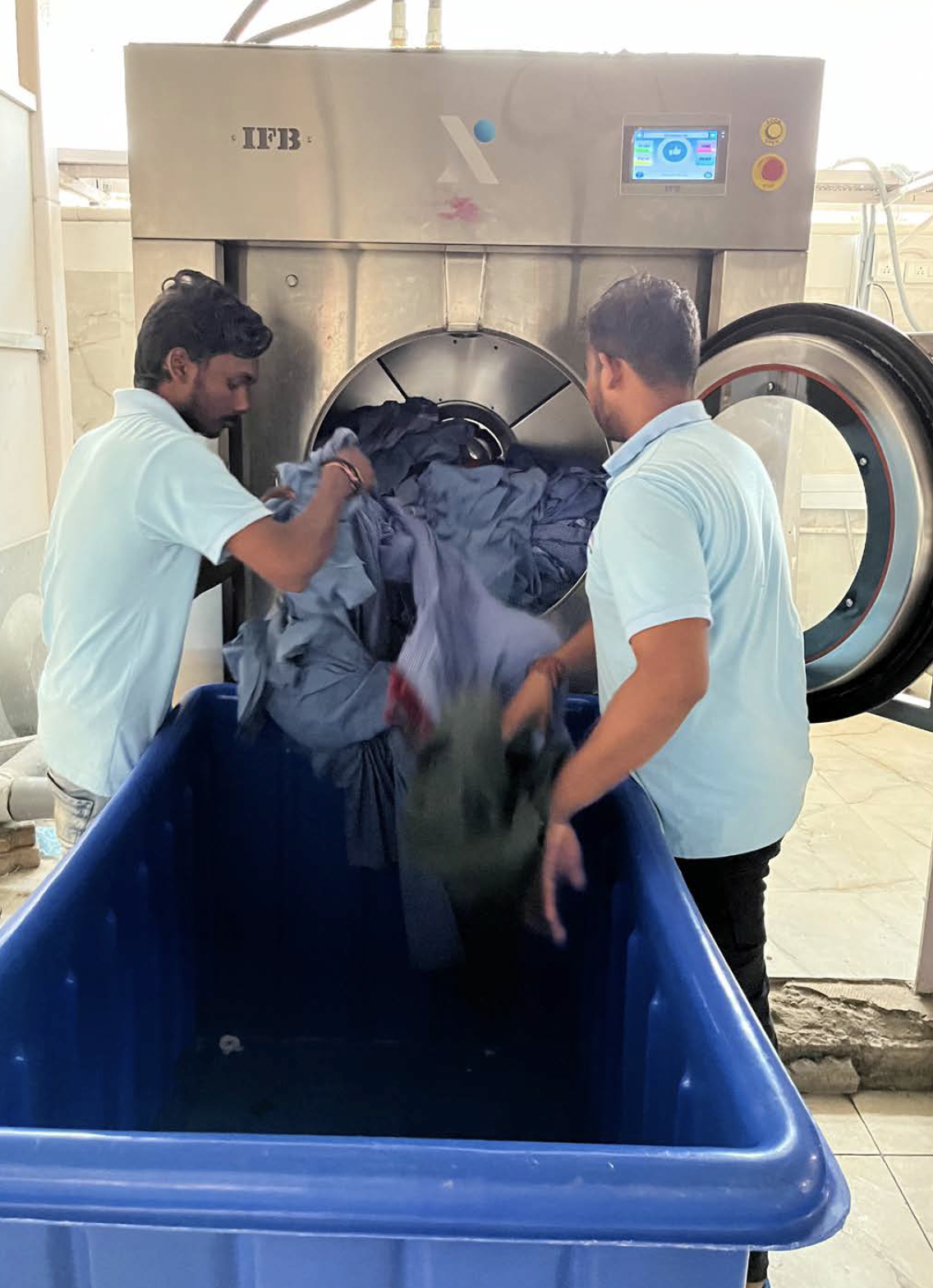

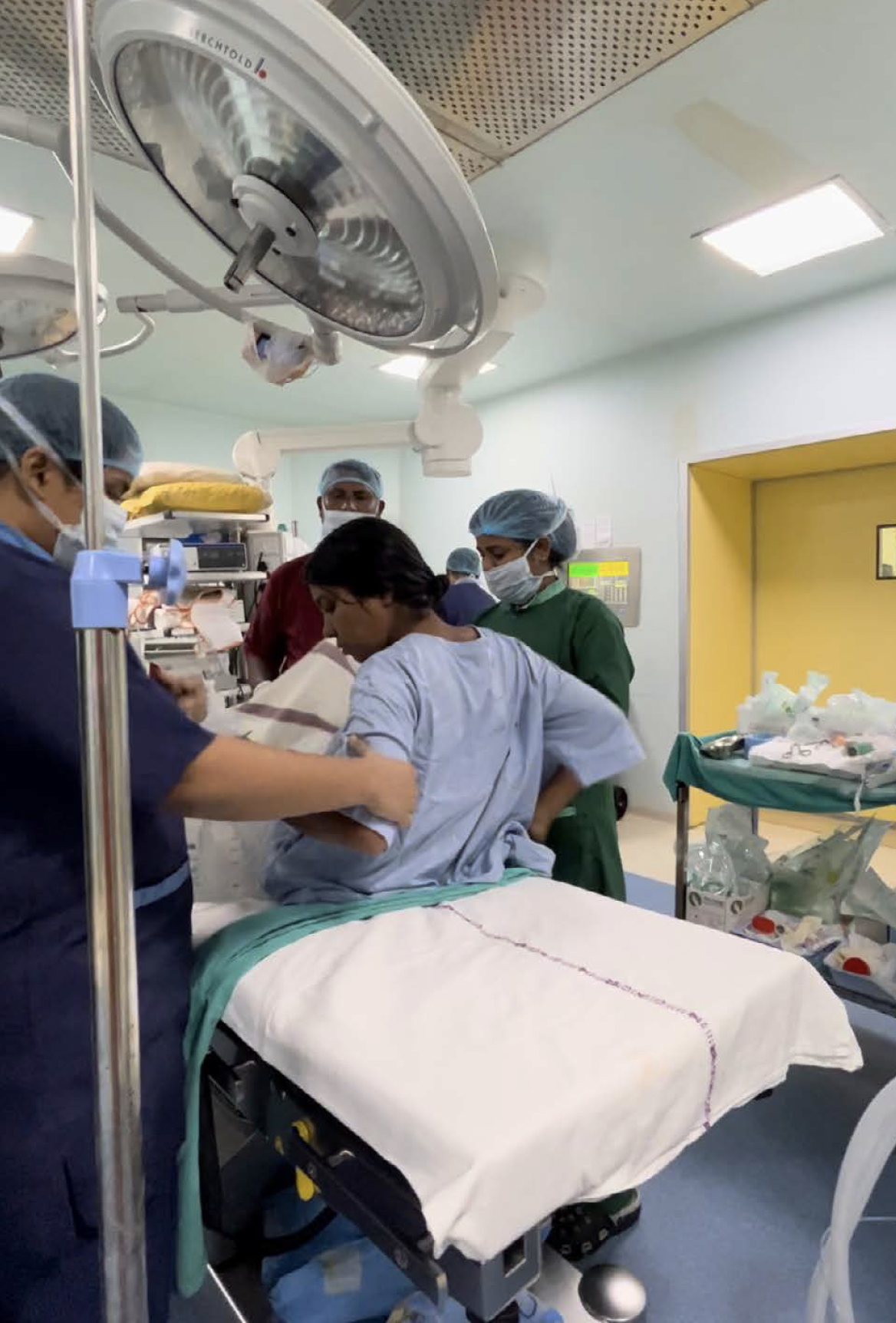



Pilot Design
For Respective DepartmentsAfter the live testing phase and gaining insights from the respective categories, the designs were improvised.
Maternity Ward
The gown has an underneath flap the exposes the whole abdomen until the crotch (for ease of examination and ultrasounds). The same flap has a drawstring that’s adjustable and ties into a beautiful drape for mother’s to be. The design also conceals the brests while they feed the baby post delivery.
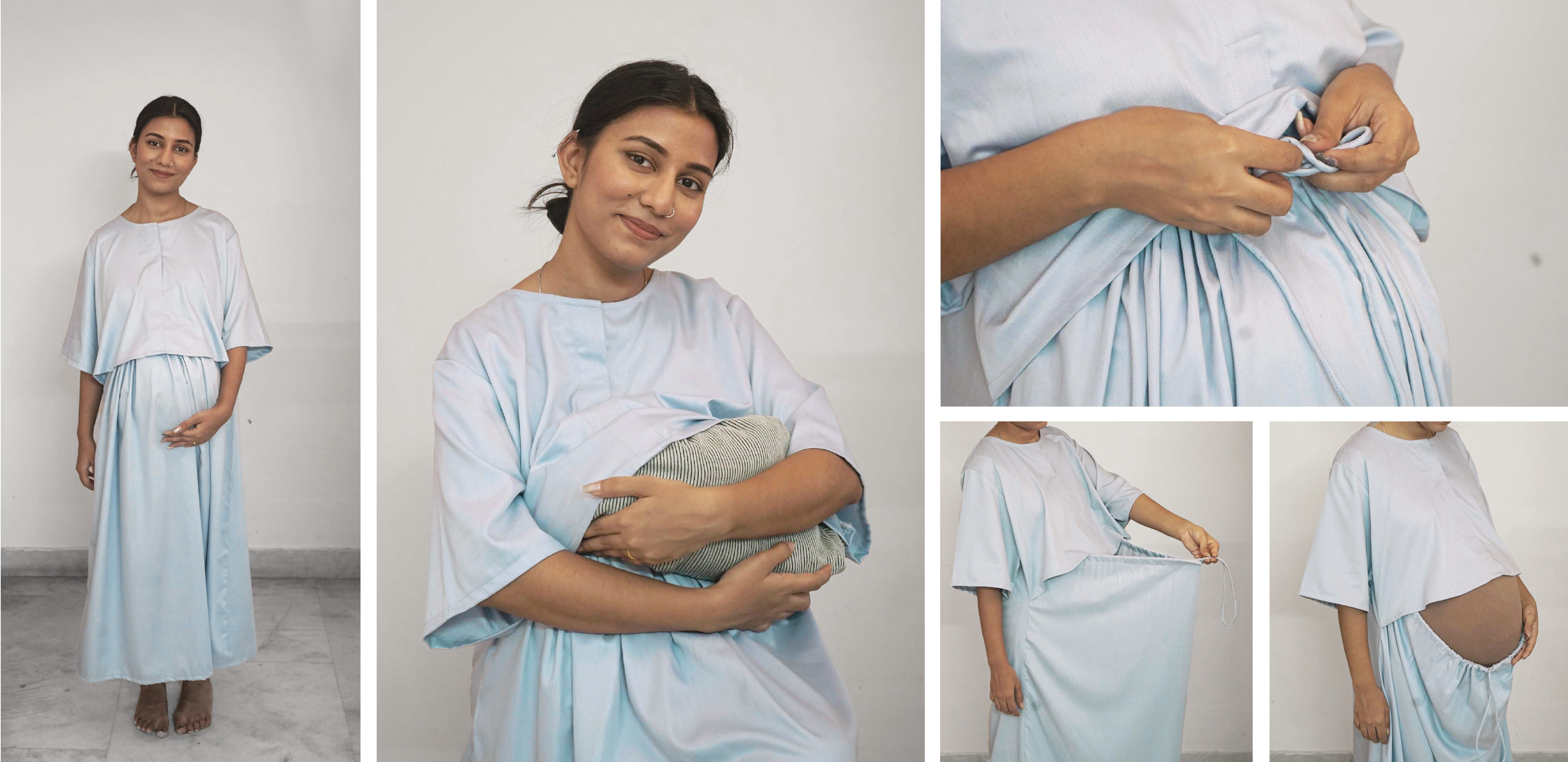
Operating Theaters
The two piece contains an Aangrakha inspired (cross-body drawstring tye) around mid-thigh length. Operators wont have to take the bottoms when operating the top half of the body and vice-versa. The sleeve opening is made underneath the arm that keeps the silhouette intact while still giving access for BP cups,etc. The overlap back-flap joining is done mid-back for easy lower back access for epidural’s, etc.

The tops of both OT and wards will be accompnied with the same bottoms. They are simpler to wear and has both elastic and drawstring for fastening. The side slits are for urinal/other catheters or can be used for hanging the same.
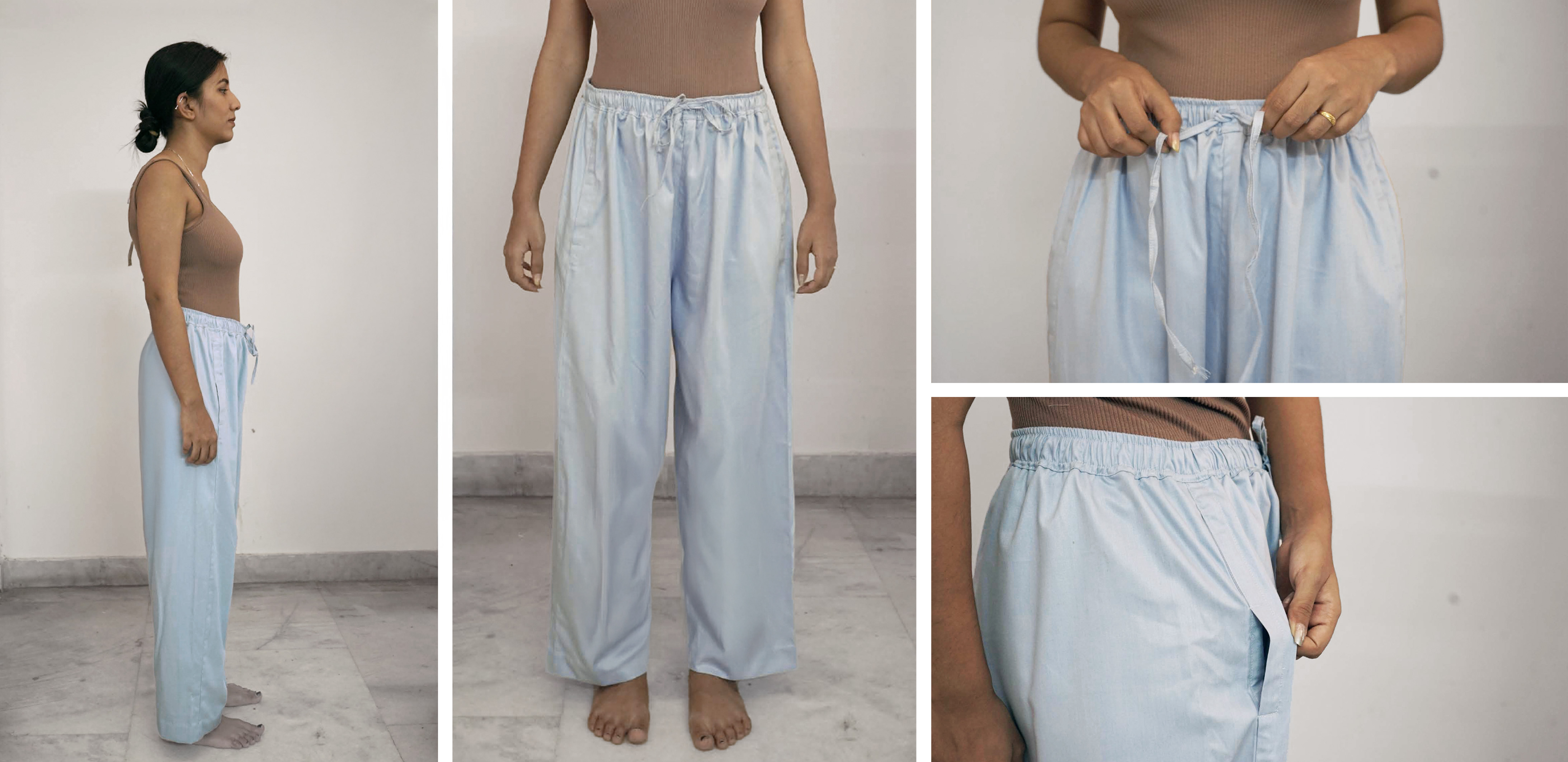
Inpatient Units
It’s the same but smplified version of the OT top. it’s a functional and relatively easy construction to understand for users. Allthough it’s made open from just front but can be worn the other way if required (eg. gastro surgery).

Product In Use
User Experience in real environment- Maternity Ward
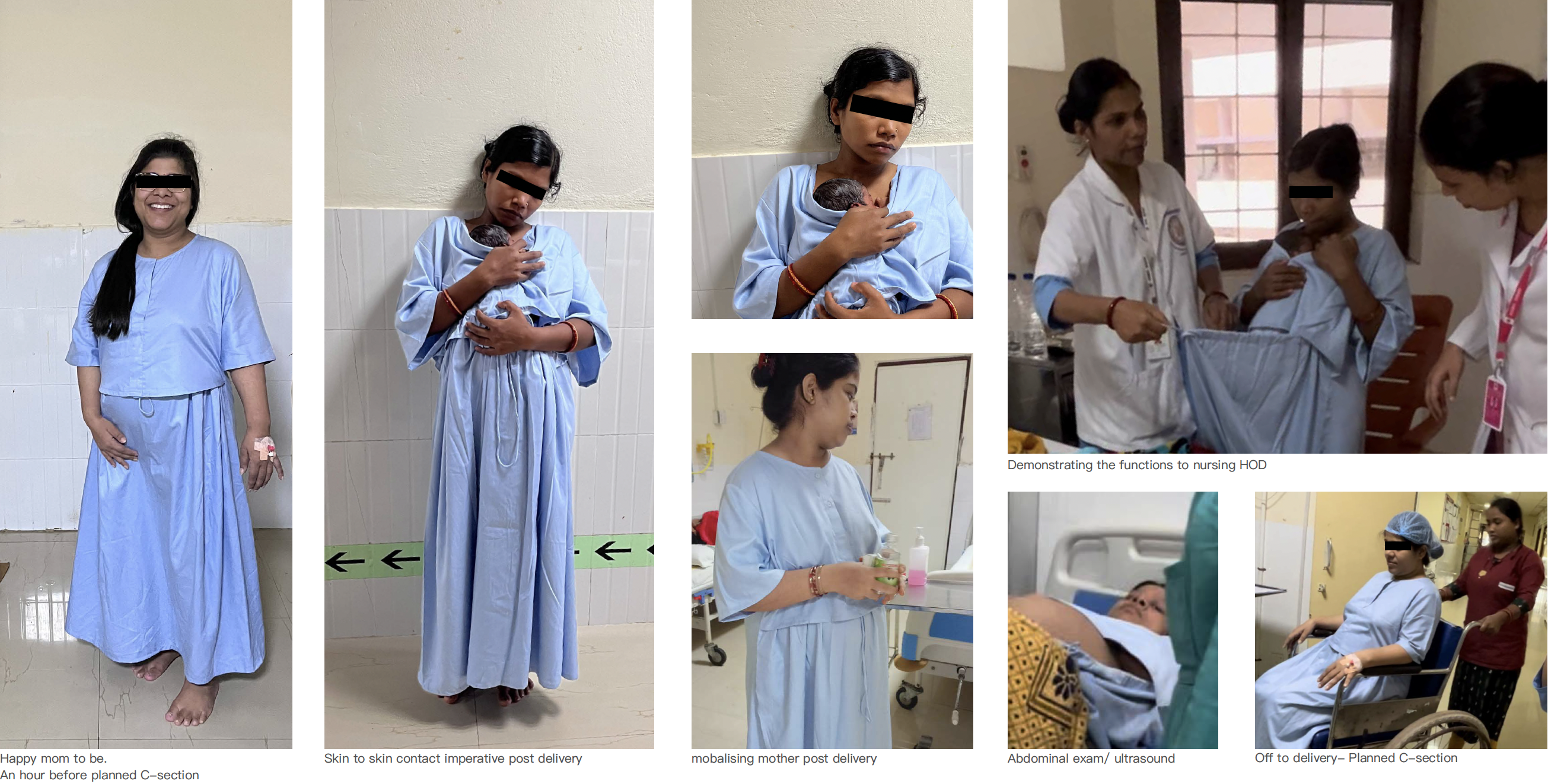
- Operating Theaters
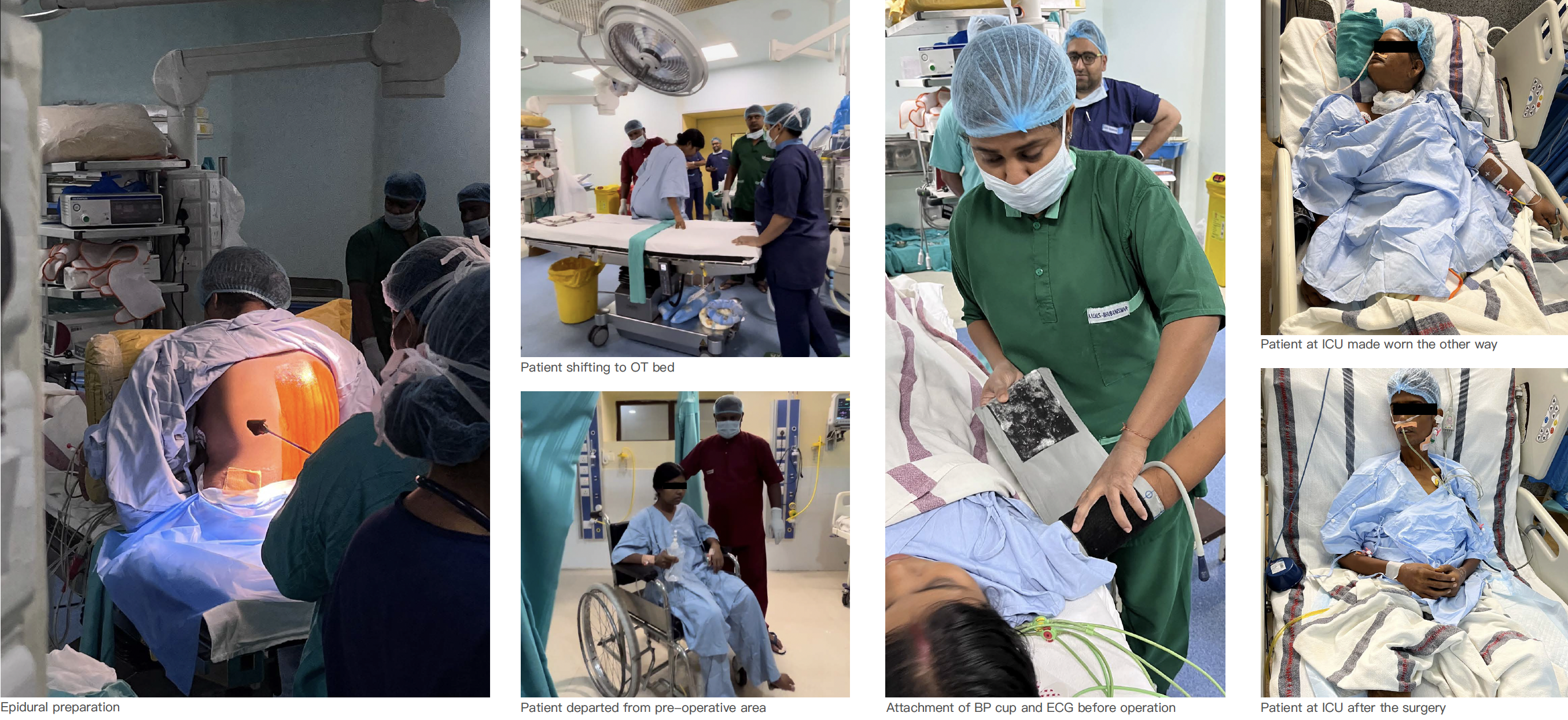
- Inpatient Units

“Design matters most where it’s been ignored the longest—like the hospital gown, where dignity was never a part of the brief.”
- Ravinshu Sagar
- Ravinshu Sagar
︎︎︎
Back to Top

Conceived as my final graduation project
at the National Institute of Design, India
In collaboration with All India Institute of Medical Sciences.
2022-23
This work was executed in a live, real-world setting to bridge design thinking with practice.
